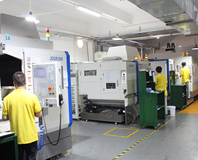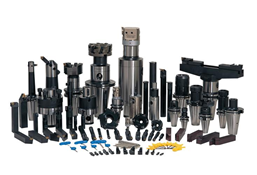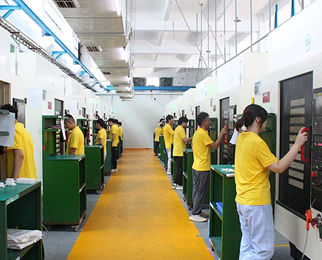CNC numerical control machine tools have more advantages than traditional processing equipment. In the mechanical processing process, CNC machining has more advantages in terms of product processing accuracy and processing efficiency.
In terms of auxiliary time for loading and unloading the workpiece - measuring - changing tools - adjusting the machine tool, traditional processing will take more than 7/10 of the workpiece, while CNC processing will greatly reduce the processing time. CNC machining adopts a centralized process, which also reduces the impact of multiple clamping of workpieces on machining accuracy, eliminates errors and reduces personnel labor intensity. CNC machining hours can not only accurately estimate and improve efficiency, but also improve production quality and reflect higher estimated output, which is more conducive to the management of production quality.

After careful research on the CNC machining process, the control and management of production quality are strictly divided into the following points:
1. Improvement of product processing technology.
The processing cost of a product is directly related to the craftsmanship of its structure. The processing technology of the product determines its processing cost, and also limits the processing efficiency and production capacity. Therefore, from the perspective of product design, the difficulty of the processing process should be reduced as much as possible, thereby reducing processing costs, shortening CNC processing time, improving processing quality and processing efficiency, and ultimately increasing CNC production capacity.
2. The CNC system controls the tool life management.
The life management control of the tool by the CNC system is determined by calculating the number of tool machining times or using the machining time. Therefore, when the tool life reaches the expected number of machining times or time, the CNC automatically stops the action. If manual monitoring is not in place, the tool cannot be replaced in advance or the tool life can be reset, the CNC processing capacity will be affected.
3. Tool life is a key factor affecting spindle utilization.
Especially when a product has many CNC machining procedures, a large processing volume, and high processing dimensional accuracy requirements, more types of cutting tools are required. This is because the CNC tool magazine automatically changes tools, and tool setting operations are more frequent, and the tool wear is larger, which makes manual tool changes and machine adjustments more frequent.

4. Therefore, tool wear is an important indicator that affects the normal production rhythm and productivity of CNC. By improving the technology and improving the life of the cutting tools, it is not only possible to save the cost of the cutting tools, but more importantly, it can reduce the downtime of the CNC spindle, thereby increasing the utilization rate of CNC machining and improving the quality of production products.
5. Optimization of CNC programs and process parameters.
In the process of determining the product processing technology, all functions of CNC and other CNC machine tools should be fully considered to shorten the processing route, give full play to the cutting performance of the tool, optimize the various processing parameters of the CNC, and ensure high-speed spindle processing to reduce parts The CT time of processing ultimately improves the processing efficiency of the product and improves the production quality.
6. Optimization of CNC machining technology.
When formulating CNC machining technology, we should not only consider the feasibility of processing, but also focus on the impact of the formulation of the machining technology on processing efficiency. By rationally arranging the processing process sequence and reducing the number of tool changes, CNC processing CT time can be effectively shortened and productivity increased.
7. Strictly control the production site
In the CNC production and processing process, production operation SOP must be formulated and strictly implemented to standardize manual work actions and reduce the phenomenon of inactivity and unnecessary waste of action time. Establish an incentive system to increase operators' work enthusiasm to improve production capacity and product processing quality.
8. Logistics timeliness.
During the production process, the products to be processed cannot be delivered in time, causing the CNC spindle to stop, thus affecting production capacity. There are many factors that affect the timeliness of processing of OEM products, including the lack of awareness of logistics personnel, the inactivity of CNC operators, unscientific and unreasonable workshop layout and logistics system, the inability to match the production capacity between processes, and the untimely incoming materials from the work section. And other issues. All will affect the production capacity of CNC. When planning the workshop production layout, the finished area and the area to be processed of the product should be as close as possible to the CNC to reduce the waste of operator time when picking up and placing products. Therefore, by optimizing the workshop production layout and logistics methods, the logistics timeliness of products to be processed can be improved. At the same time, personnel management will be strengthened.

9. Very detailed inspection of machining abnormalities
Frequently check the actual condition of the equipment and fixtures to reduce potential abnormalities in the CNC machine tool itself to ensure the service life of the cylinders, solenoid valves, motors and other electrical components on the fixtures in the oil environment, so as to reduce the cost of the CNC spindle during the production process Improve spindle utilization due to possible production interruptions.
10. Standardization of workshop production layout.
Effective workshop layout will enable the company's human, material and financial resources to be arranged in the most reasonable and effective manner, thereby forming logistics and value streams, fundamentally improving the production efficiency of the company, and achieving lower logistics costs and production costs, inventory reduction, The ultimate goal is to transform workshop production to a multi-variety, small-batch, and flexible production method. The quality of workshop production layout design has a significant impact on logistics costs, logistics efficiency, actual production capacity, and production efficiency during the operation of the production system. According to statistics, 20%-50% of the manufacturing costs of a product are used in non-processing processes such as logistics and storage. Effective layout can save logistics costs by more than 30%. Therefore, the advantages and disadvantages of the workshop layout not only affect the smoothness of the entire production, but also become a key factor affecting the production efficiency, production capacity and production cost of the product.
In order to ensure high-quality management of the CNC machining and production process, it is necessary to start from the above points and conduct reasonable planning and implementation to more effectively improve production capacity.